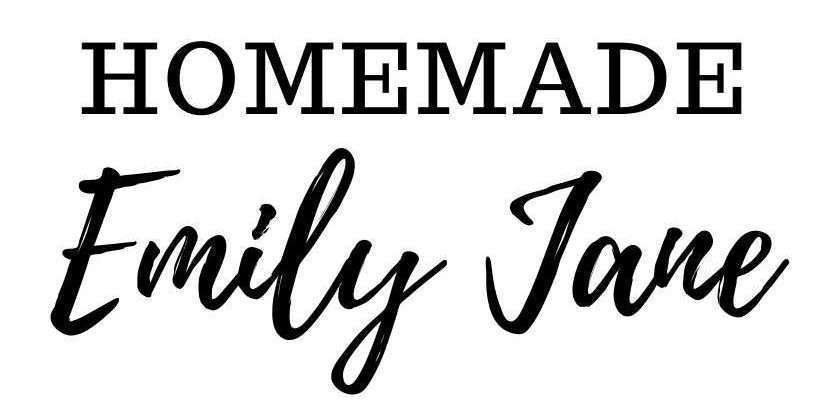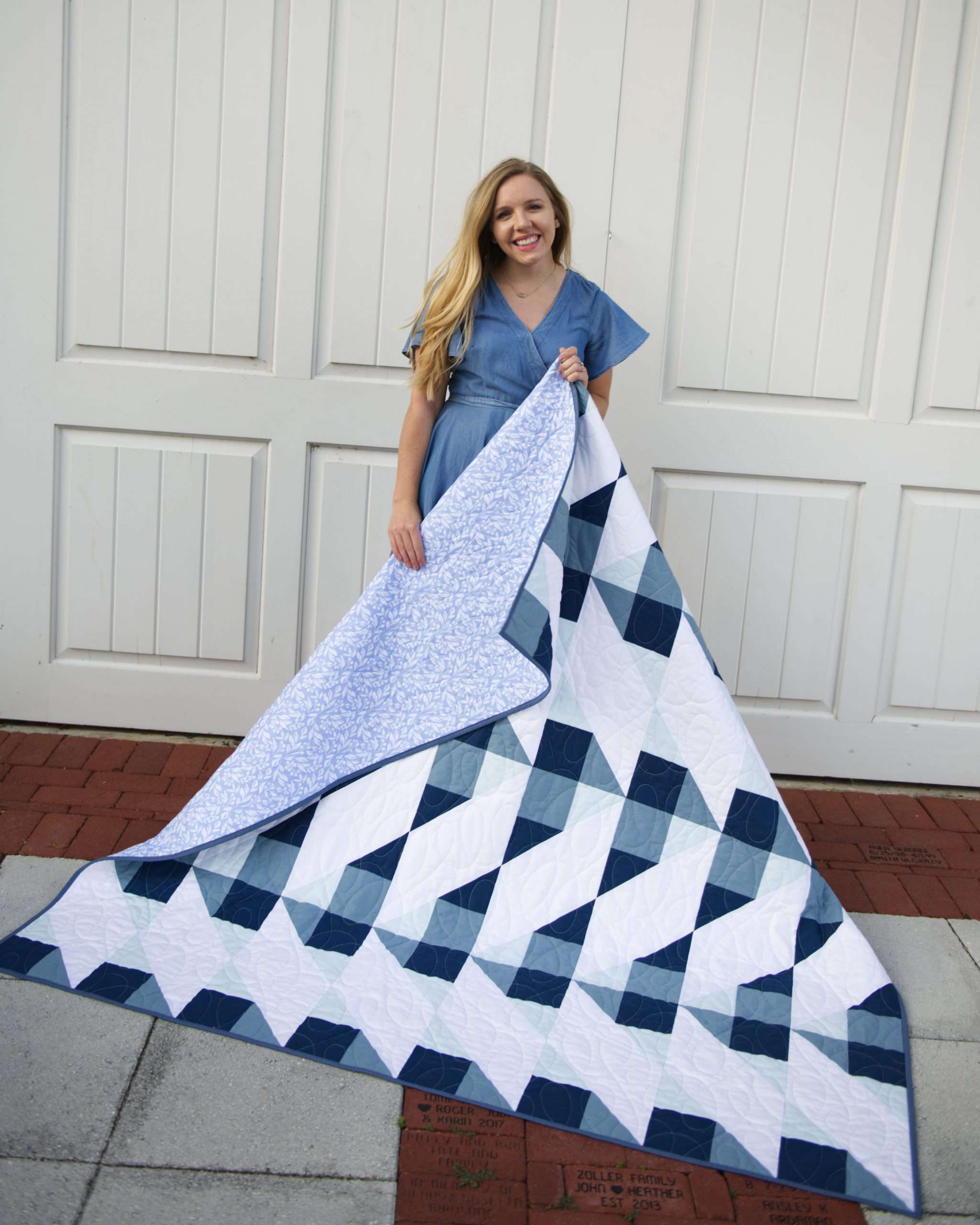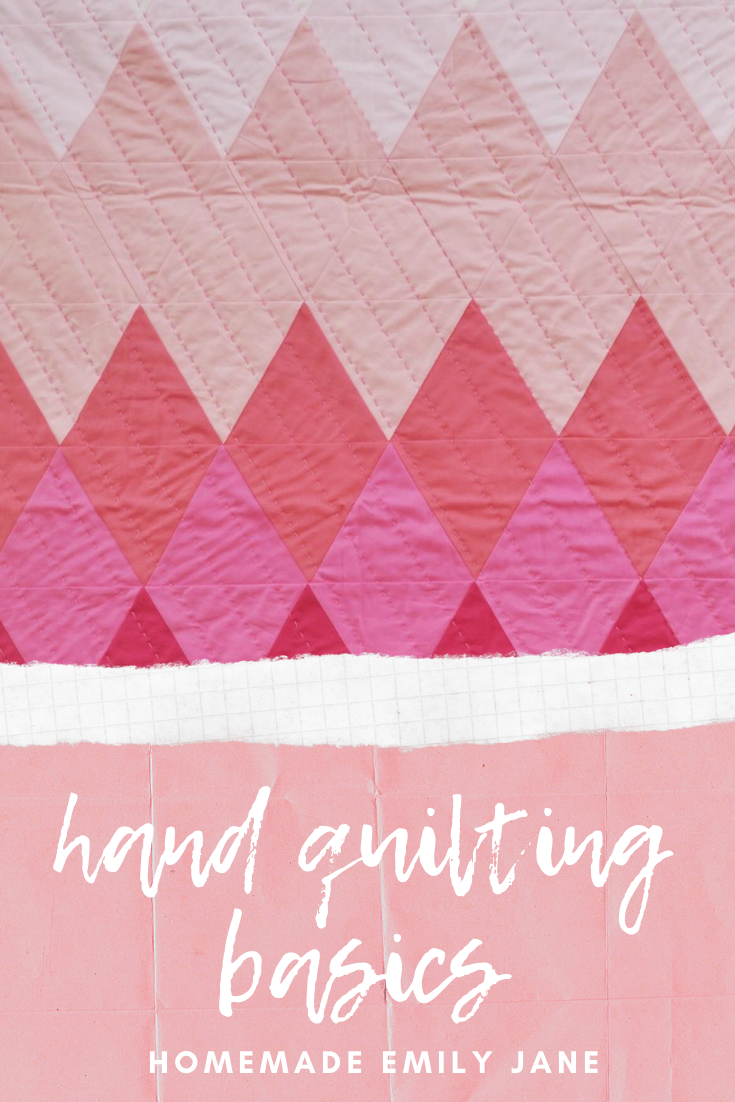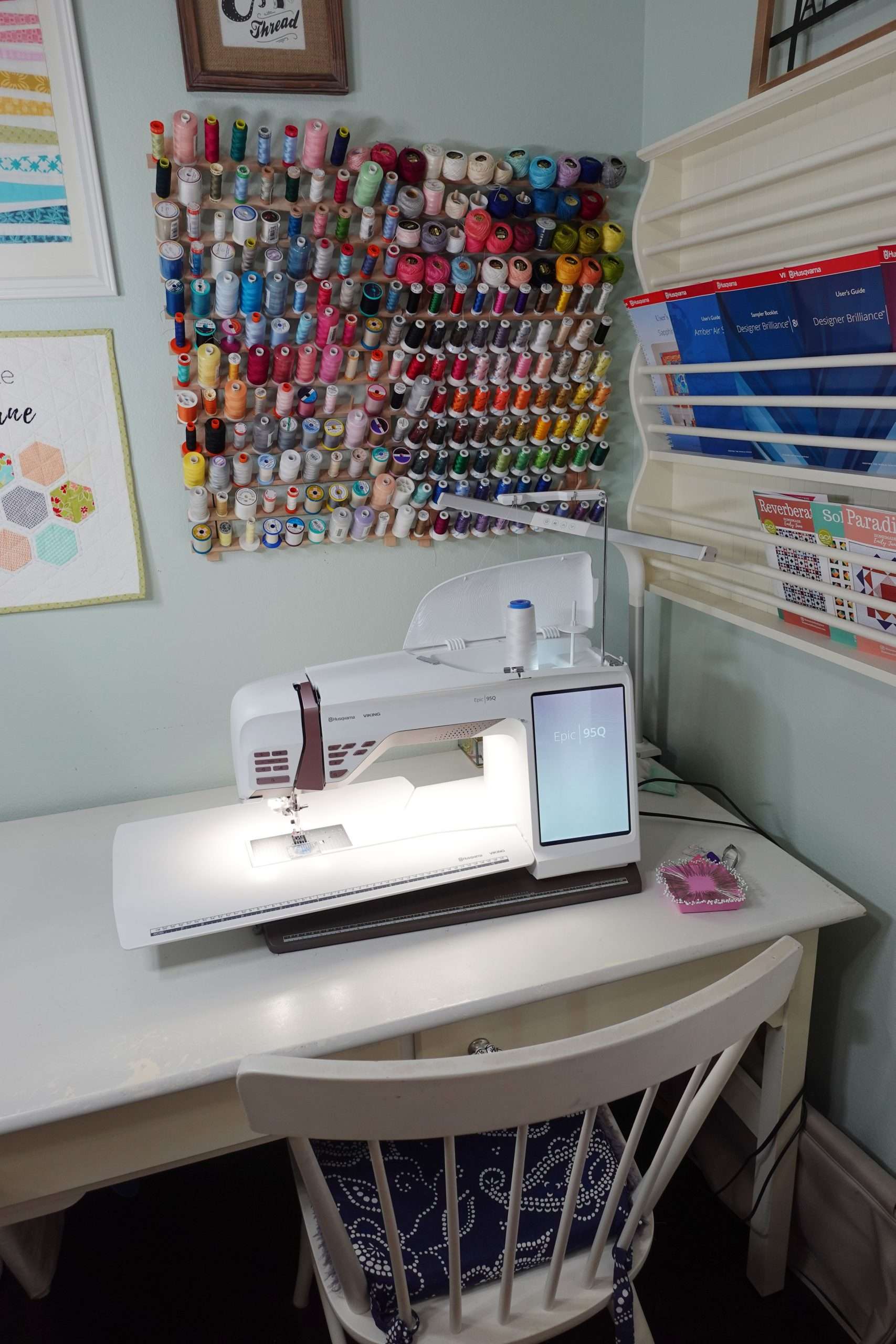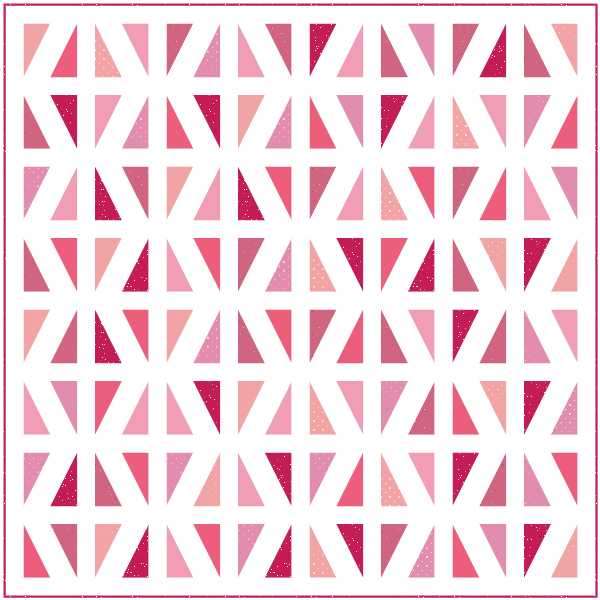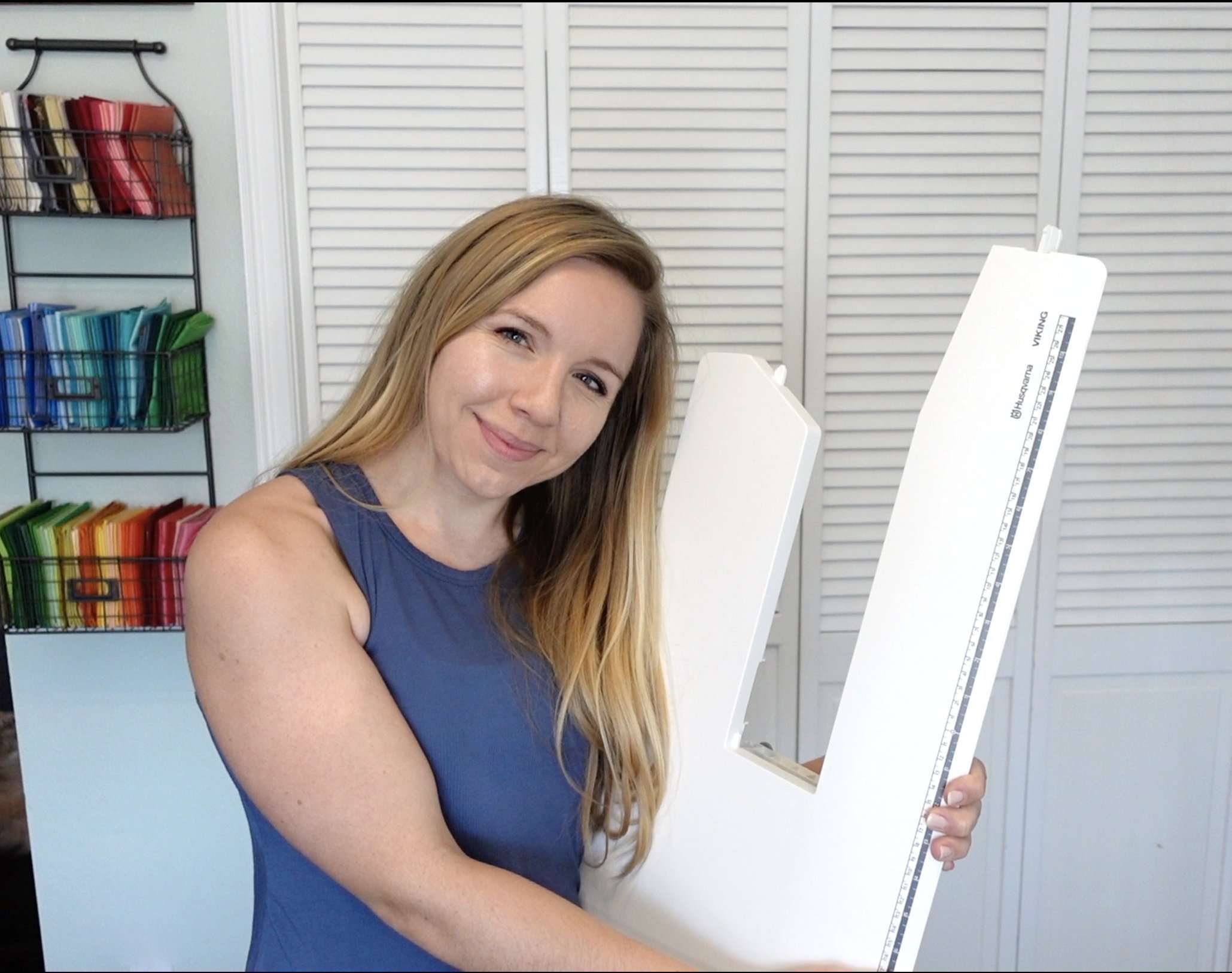Quilt Batting: Which is the Best?
Wondering which type of batting to use on a quilt? It can certainly be quite confusing! This post will walk you through a couple of the most common types of batting and help you determine which type of batting is best for you!
Of course finding the Best Quilt Batting might change depending on what your needs are for your quilt. Watch this video for a brief overview of some common types of batting:
Whether you call it batting, wadding, stuffing or filling, the layer on the inside of a quilt can dramatically change the look AND feel of the quilt! Before we can determine which quilt batting is the best for your project, you should think through a couple of these questions:
- What’s the purpose of your quilt?
- How will you plan to finish the quilt? (hand quilting, machine quilting, ties, etc…)
- How fluffy/puffy do you want the quilt?
- What’s your budget?

This article contains affiliate links; these links allow me to make a small commission on purchases made after clicking on the links, but does not alter the shopping experience for you!
Key Quilt Batting Features
Now that you’ve had some time to think about what you need for a particular project, we can dive into some of your quilt batting options! This post will be split out by fiber content of a few main types of batting, but it’s also good to consider some other features such as batting loft, quilting distance, scrim, basting method, and environmental impact.
Batting Loft
The height, or the “loft” of the batting. I personally prefer low-loft batting in my quilts for a couple reasons. One, because it is easier to work with, and two, because most of my quilts are used in an already warm climate. You may want a thicker batting, or a higher loft, for warmth or for design reasons. A higher loft provides more “puff” in the quilt and shows off the quilting a little bit more!
How you Plan to Quilt & Quilting Distance
The batting that you use will dictate how you quilt it, and how dense your quilting will need to be. Some types of quilt batting need to be quilted every 3 or so inches apart, while others will remain stable with quilting up to 12 inches apart. The way you plan to finish your quilt will help you decide which batting is best to use on a specific quilted project. Some battings are great for hand quilting while others are better for machine quilting. Some battings will work well if you plan to tie the quilt, while others may not be good options for a tied quilt.
Scrim vs. No Scrim
Sometimes batting may have a thin layer of stabilizer, called scrim. This thin layer is needle-punched into the batting and provides additional strength to the batting. Batting with scrim often allows for further distance between quilting, but is not recommended for hand quilting.
Environmental Impact
While it might not be the first thing you think about when it comes to quilting, the environmental impact of your quilt may be a factor you want to consider while choosing what goes on the inside of your quilt! In more recent years, companies have begun making quilt batting made from recycled materials, such as recycled plastic water bottles. I’ll share more details below when we dive into each type of batting, organized by the fiber content.
Basting Method of Choice
One final thing to consider is how you plan to baste your quilt. Some batting types offer a “fusible” option – which is great if you want to iron it to your quilt top to make it secure before quilting.

Quilt Batting by Fiber Content

100% Cotton Quilt Batting
Cotton is a great choice for quilt batting, especially if your quilt top and backing are also made from cotton fibers. It’s best known for being soft, breathable, warm, and easy to work with. It does shrink when you wash it, which creates a crinkly/puckered look on more dense quilting designs. Cotton quilt batting without scrim can typically be stitched up to 8″ apart, and if there is scrim it might go all the way up to 12″ apart. It not typically recommended for tied quilts.
Cotton batting will typically have about 1-3% of shrinkage when you wash and dry your quilt for the first time. The shrinkage creates a crinkly or puckered look, so keep that in mind while choosing your batting.

100% Wool Quilt Batting
Wool batting is known for its warmth, breathability, and virtually no shrinking in the wash. It’s not as sturdy as cotton and I personally find it harder to work with, so I wouldn’t recommend it for your first quilt. Once you get the hang of it, it’s a really cozy option for the inside of your quilt!
Wool batting can be quilted up to 8″ apart by machine or by hand. In fact, wool is a favorite for many hand quilters! One downside to using wool batting is that it is not recommended to put it in the dryer, as high heat can cause stiffness.
100% Polyester Quilt Batting
Polyester batting is one of the most common types. It is very easy to find at many of the “big box” stores, and is great for craft quilts. The higher loft polyester batting is a bit trickier to work with, but it provides a really fun texture and “puffiness” to a quilt. Polyester batting is also one of the cheaper options, which is great if you’re trying to stick to a tight budget.
Polyester quilt batting does not shrink and dries quickly, but one downside is that it does not wick moisture away like natural fibers would. You can quilt by machine, by hand, or tie your quilt when using polyester batting.

100% Recycled Content Batting
If you want to help reduce plastic waste in the environment, you can select to use batting made purely from recycled content. One great choice is Quilter’s Dream Green batting, which is considered Polyester batting and made from recycled plastic water bottles.
Quilter’s Dream Green batting behaves much like polyester batting. It does not shrink and is excelled for both hand or machine quilting, as well as tied quilts.

Quilt Batting with Blended Fiber Content

Bamboo Blend Batting
Blend batting such as the Quilter’s Dream Orient is one of my favorites. This one is a mix of fibers such as bamboo, silk, and tencel and it has great drape, is super soft, and easy to work with.
Bamboo blend batting is in my opinion, the softest and best draping quilt batting option. It does have about 1-3% shrinkage when washed and is great for hand or machine quilting. One downside to bamboo quilt batting is that it is a bit more expensive than the other quilt batting options. Also, it is not recommended for tied quilts. If you can, I definitely recommend that you try out Quilters Dream Orient!

80/20 Batting
When I first started quilting, I was told 80/20 batting was the best to use, and I think I agree! It is 80% Cotton and 20% Polyester. This is definitely the one I would recommend for beginners, and you can even chose to get the fusible kind which will help with quilting later on!
Some benefits of an 80/20 blend batting are that it has a nice drape and you can quilt up to 8″ apart if you prefer less dense quilting. It shrinks about 1-3%; it’s breathable, wicks moisture, and resists bearding.

So, Which Quilt Batting is the BEST?
If you’ve never tried any of these types of quilt batting, I definitely recommend that you try them for yourself! You might just be surprised by how different the various types of batting are!
BEST ON THE BUDGET
If you’re looking for the best budget-friendly batting, I’d recommend polyester or poly-blend battings. They come in a variety of lofts and sizes, and are sold at many common retailers.
BEST SOFTNESS & DRAPE (my personal favorite)
My personal favorite quilt batting is Quilter’s Dream Orient. It’s a bamboo blend quilt batting and truly wonderful to work with! I love how cozy and soft quilts are when I use this batting, and I love that they can be put in the dryer.
BEST FOR HAND QUILTING
Many hand quilters love using Wool Quilt Batting on their projects because of how soft it is and how easily the needle glides through the layers.
BEST OVERALL WINNER
If I had to pick a “best” batting overall, I’d say it’s the 80/20 blend batting. It’s a great option with nice drape that it’s too tough on the wallet! I also love that you don’t have to quilt it too densely if you don’t want to, so it opens up options for how you may want to finish your quilt. If you’re new to quilting I definitely suggest you try out some 80/20 blend quilt batting.
Join the Online Quilting Community
Do you want to get access to additional resources and connect with other quilters too? Consider joining the Homemade Emily Jane quilting community on Patreon!
Shop Quilt Patterns:

I hope this article has helped you learn a bit more about quilt batting, and have the confidence to pick out which batting is best for your next project! If you want to learn more about quilting or get inspired for your next quilt, check out these other articles:
- How to Make a Quilt from Start to Finish
- Everything You Need to Know about AccuQuilt
- How to Hand Quilt (with video tutorial!)
- Free “Explore” Quilt Pattern
- Binding a Quilt (3-part blog series)
Never miss a post! Subscribe to the newsletter and follow me on Instagram @homemadeemilyjane.
